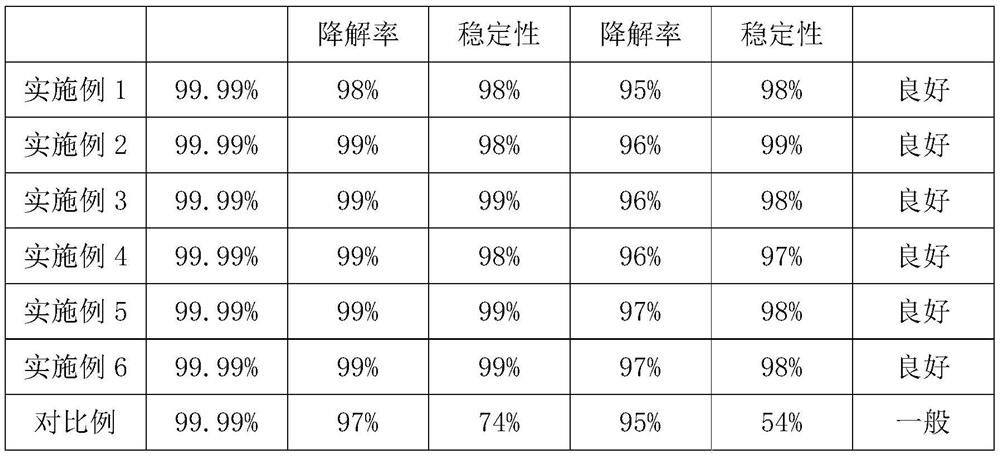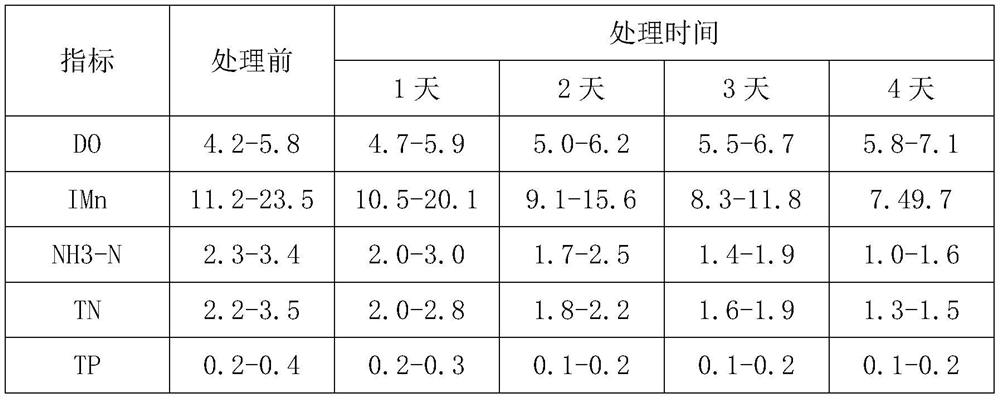A kind of preparation method of high-efficiency graphene-based photocatalytic material
A photocatalytic material and graphene-based technology, applied in the field of photocatalysis, can solve the problems of easy loss of photocatalytic materials, achieve the effects of preventing aggregation, solving agglomeration, and improving adhesion
- Summary
- Abstract
- Description
- Claims
- Application Information
AI Technical Summary
Problems solved by technology
Method used
Image
Examples
Embodiment 1
[0030] A preparation method of an efficient graphene-based photocatalytic material, comprising the following steps:
[0031] Step 1, put two-dimensional graphene into distilled water, then ascorbic acid, and stir evenly to obtain a graphene suspension;
[0032] In step 2, acrylic acid is added to the graphene suspension, followed by a low-temperature ultrasonic reaction for 2 hours, a water bath reaction for 2 hours, and a vacuum distillation reaction for 2 hours to obtain a coated three-dimensional graphene;
[0033] Step 3, adding n-butyl titanate to anhydrous ethanol, adding ethyl cellulose and stirring until completely dissolved to form titanium liquid;
[0034] Step 4, put the coated three-dimensional graphene into the titanium solution for low-temperature ultrasonic reaction for 2 hours, take out and quickly dry to obtain the three-dimensional graphene with titanium film;
[0035] In step 5, the three-dimensional graphene with the titanium film is placed in an infrared ...
Embodiment 2
[0042] A preparation method of an efficient graphene-based photocatalytic material, comprising the following steps:
[0043] Step 1, put two-dimensional graphene into distilled water, then ascorbic acid, and stir evenly to obtain a graphene suspension;
[0044] Step 2, adding acrylic acid to the graphene suspension, then performing a low-temperature ultrasonic reaction for 4 hours, a water bath reaction for 6 hours, and a vacuum distillation reaction for 4 hours to obtain a coated three-dimensional graphene;
[0045] Step 3, adding n-butyl titanate to anhydrous ethanol, adding ethyl cellulose and stirring until completely dissolved to form titanium liquid;
[0046] Step 4, put the coated three-dimensional graphene into the titanium solution for low-temperature ultrasonic reaction for 4 hours, take out and quickly dry to obtain the three-dimensional graphene with titanium film;
[0047] In step 5, the three-dimensional graphene with the titanium film is placed in an infrared d...
Embodiment 3
[0054] A preparation method of an efficient graphene-based photocatalytic material, comprising the following steps:
[0055] Step 1, put two-dimensional graphene into distilled water, then ascorbic acid, and stir evenly to obtain a graphene suspension;
[0056] Step 2, adding acrylic acid to the graphene suspension, then performing a low-temperature ultrasonic reaction for 3 hours, a water bath reaction for 4 hours, and a vacuum distillation reaction for 3 hours to obtain a coated three-dimensional graphene;
[0057] Step 3, adding n-butyl titanate to anhydrous ethanol, adding ethyl cellulose and stirring until completely dissolved to form titanium liquid;
[0058] Step 4, put the coated three-dimensional graphene into the titanium solution for low-temperature ultrasonic reaction for 3 hours, take out and quickly dry to obtain the three-dimensional graphene with titanium film;
[0059] In step 5, the three-dimensional graphene with the titanium film is placed in an infrared d...
PUM
 Login to View More
Login to View More Abstract
Description
Claims
Application Information
 Login to View More
Login to View More - R&D
- Intellectual Property
- Life Sciences
- Materials
- Tech Scout
- Unparalleled Data Quality
- Higher Quality Content
- 60% Fewer Hallucinations
Browse by: Latest US Patents, China's latest patents, Technical Efficacy Thesaurus, Application Domain, Technology Topic, Popular Technical Reports.
© 2025 PatSnap. All rights reserved.Legal|Privacy policy|Modern Slavery Act Transparency Statement|Sitemap|About US| Contact US: help@patsnap.com



